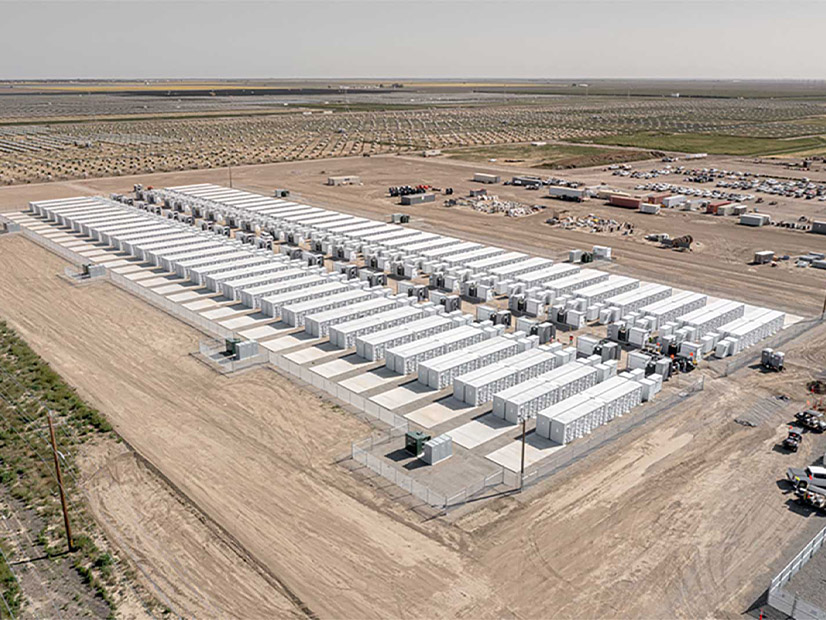New Jersey’s Board of Public Utilities (BPU) on Nov. 7 released an update to its proposed Storage Incentive Program (SIP) that changes how the subsidies for utility-scale, or “grid supply,” projects are determined as the state shoots for 2,000 MW of total capacity by 2030.
The proposal is a revision of a draft released in September 2022. It retains the original version’s segmented structure, with different incentives for grid supply projects and those behind the meter. (See NJ Seeks Stakeholder Input on Pending Storage Program and New Jersey Offers Plan to Boost Lagging Storage Capacity.)
But the original version would have paid utility-scale projects through an “administratively determined fixed incentive plus performance incentive structure” based on the amount of carbon emissions abated through their operation. In the new version, “grid supply energy storage systems will be awarded fixed incentive payments through an annual competitive bidding structure.”
“Grid supply storage resources will initially receive only a fixed upfront incentive, as the [program] will defer an avoided emissions-based performance mechanism until suitable datasets become available,” the proposal says.
The grid supply segment would be launched early in 2025, while the BTM incentives, to be set administratively by the BPU, would begin in 2026.
According to the proposal, the board based its decision to change the structure in part on “the number of storage projects that have remained in the PJM interconnection queue following the imposition of stricter readiness requirements.”
Under the competitive structure, “the board would release a solicitation with the specific amounts, or ranges of amounts, being sought for a given fiscal year. The solicitation would ask participants to identify the level of fixed incentive needed to support project revenue requirements,” the proposal says.
Another change is that the fixed payments for both segments would be paid upfront, as soon as the project begins commercial operations, rather than spread out over 10 to 15 years as was stipulated in the previous proposal.
“Upfront incentives provide a lower level of risk to system owners and developers and reduce the overall administrative burden of the program,” the proposal states.
There will be a public hearing on the plan on Nov. 20.
The BPU’s goal is to encourage the development of storage systems that charge using clean, off-peak energy and improve system reliability. The proposal anticipates a reduction in costs as “New Jersey’s deployment of storage systems increases.”
“Energy storage resources are critical to bolstering the resilience of New Jersey’s electric grid, reducing carbon emissions and enabling New Jersey’s transition to 100% clean energy,” the proposal says.
A BPU spokesperson said the state currently has 560 MW of installed storage, but those projects will not be counted toward the 2,000-MW goal. And the proposed incentives will not be retroactive, according to the proposal. “Only energy storage projects placed into service after the date of the board order establishing this program will be eligible for incentives.”
BTM Incentives
Incentives in the distributed segment would be allocated using a “declining block structure,” in which the BPU would establish an initial capacity of storage sought, measured in megawatt-hours. Once that block is fully subscribed, the board would set a lower incentive for the next block, according to the proposal.
“If a block remains unsubscribed or under-subscribed, the board would have the option to increase the incentive,” according to the proposal. The system would give the BPU “flexibility to establish block sizes, reset incentive levels (if necessary) and adjust programmatic elements on an annual basis, as needed, to meet policy goals and budgetary considerations.”
To evaluate an appropriate incentive level, a consultant hired by the BPU conducted a “gap analysis” of the “revenue and savings potential of behind-the-meter storage projects for a variety of different building types, rate classes and tariffs associated with the New Jersey” utilities, according to the proposal.
The results showed a “consistent shortfall” of revenue of about $220 to $330/kWh, which amounted to between 37 and 47% of the cost of the systems. In response, the proposal suggests a starting incentive of $300/kWh for a small storage system (less than 100 kW) and $200/kWh for a medium project (100 to 500 kW). A large project (over 500 kW) would get an incentive of $150/kWh.
On top of that, distributed projects could get performance incentives, which would be awarded when they respond to dispatch events.
To further encourage developers to build in overburdened communities, the proposal suggests an additional incentive of $100/kWh for small, $67/kWh for medium and $50/kWh for large projects.
“Distributed storage plays an important role in reducing emissions and enhances the resilience of the electric grid — both important factors in meeting Gov. [Phil] Murphy’s environmental justice and equity directives,” according to the proposal. “Because distributed storage resources are customer-sited, energy storage projects serving overburdened communities will provide improved energy resilience to the local communities and may help offset ‘dirtier’ backup generation options during emergency conditions.”


